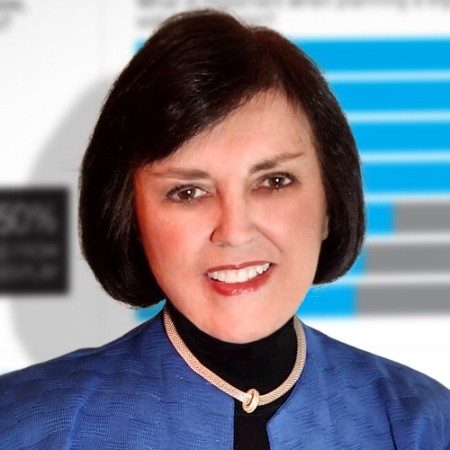TRENDING WHITEPAPERS,VIDEOS & MORE

matt
MGIC-Compass Making it Easier, Faster for Originators to Order Insurance
- Tuesday, 19 February 2019

MGIC’s mortgage insurance quotes are now available through Compass Analytics' product, pricing, and eligibility engine, CompassPPE.
Through this technology integration in CompassPPE, loan originators can select mortgage insurance products and request rate quotes without leaving the platform. This automation brings real-time mortgage insurance quotes to the point-of-sale, improving the borrower's experience because it optimizes pricing speed and accuracy.
[adbutler zone_id="326324"]
[adbutler zone_id="326327"]
This partnership was undertaken to provide seamless end-to-end mortgage pricing from point-of-sale through origination to capital markets.
"Our technology allows lenders to put accurate, granular pricing tools in the hands of loan originators so that they can help clients make well-informed decisions about one of the biggest investments of their lives,” said Nancy Pollard, managing director of pricing technologies at Compass.
The aim was to employ tools for quicker, more accurate mortgage pricing to the consumer.
"Whether lenders choose to use MGIC's new MiQ rates or traditional rate card rates, our integration with Compass Analytics will ensure quick, easy access," said Margaret Crowley, vice president of marketing and customer experience at MGIC.
Read more...
Originators Remain Trusted Advisors, Though Tech Is Changing Their Role
- Tuesday, 19 February 2019

By Pat Sherlock
One of the most talked about topics in mortgage banking is whether the industry will evolve into a self-service business. Many managers are speculating whether purchasing a home loan will become an automated, point-and-click business similar to booking an airline flight or obtaining concert tickets.
A number of high-level executives believe that digital is the way of the future and that financial companies who do not offer online solutions will be left behind.
[caption id="attachment_9789" align="alignleft" width="247"] Pat Sherlock[/caption]
Pat Sherlock[/caption]
While technological innovations have been arriving in a fast and furious manner, digital products have focused mainly on back-office processes. From transforming documents into PDFs to paperless underwriting, the advances have been swift and impactful.
However, according to a recent PwC article, "Digital Lending Must Go Beyond Eliminating Paper," the problem is that lenders have made their online experiences follow the same work flow as their offline experiences--which means they have simply duplicated inefficient processes online vs. developing an innovative workflow.
But data mining, web analytics, artificial intelligence and other developments have opened the door for companies to engage earlier in the buyer's journey.
[adbutler zone_id="326324"]
[adbutler zone_id="326327"]
Banks and mortgage companies are now recognizing that the lending industry must apply digital innovation to drive the customer experience. It is no longer enough to upload and scan documents or streamline the documentation process. Lenders must deliver personalized products and service that match their customer's specific stage in the journey of life.
We are already there with black box pricing models from investors and mortgage insurance vendors. So, what is next in digital innovation and are we far from not needing a human interface or an originator in mortgage lending? While it is not clear if the originator will be completely removed from the transaction, PwC has noted that customers still value personal advice and want a person to answer questions they might have. But that doesn't mean that it must be a face-to-face interaction or a phone call. It can be done electronically.
PwC commented that historically lenders viewed the digital channel as an alternative to offline personal collaborative channels. They contend that guidance and support can be delivered through video tools which do not require a face-to-face meeting. These digital tools are becoming more sophisticated and life-like--and we are not far from digitally augmented human support and AI-powered virtual assistants and chatbots. Just see how popular SIRI is today.
So, if these new technologies can deliver scalable consumer support, do we need to have originators involved with these loan processing functions? Probably not. What will an originator be tasked with in the future?
In my opinion, originators will fulfill the role of creating loan demand. During the refinance market boom, creating loan demand took a back seat, but it is now becoming an essential component for producers.
Creating loan demand starts with building awareness, selling value and influencing a customer in their decision process. This means that once the interest has been sparked and information has been generated whether by voice or virtual reality, the originator should no longer be involved with moving the transaction through the process.
The digital tools will take over and handle it to completion. It’s obvious, we aren’t there today, but in the not too distant future we will be. As a result, we won't need individuals to handle product exceptions. We will have advanced programs performing this function. If Amazon can make personalized recommendations based on your buying history, shouldn't mortgage lenders' systems be able to review product guidelines to make the best choice for a consumer?
Having these technologies doesn't mean that we don't need someone who can start the customer's journey. We still need individuals who can sell and help someone become interested in buying a home. We still need producers to serve as trusted advisors to persuade consumers about the value of homeownership.
Read more...Define and Grow Your Sphere
- Monday, 18 February 2019

By Dave Hershman
In the previous column, we defined the term sphere.
We now will go a little deeper and discuss the seven segments of one’s personal sphere.
Friends, family and neighbors: This part of your sphere is comprised of those with whom you have the closest relationship. Covey would say that you have built up an “emotional” bank account them. This can be the most important segment of the sphere because the members have a vested interest in helping you succeed. And many times, it is under-utilized because call reluctance keeps some people from calling on the personal segment of the sphere.
Previous customers: This segment of the sphere is well defined in practice and literature. Sometimes this segment is interchangeable with the term sphere. There are many “customer relationship management” programs available to help sales and business people keep track of and deliver value to this segment.
[adbutler zone_id="326324"]
[adbutler zone_id="326327"]
One important point: If you are new in your present industry, be sure to include the previous customers from your previous industry. These are people you have served and with whom you have developed a relationship. Starting with these customers puts you on “second base” instead of home plate.
Present and previous co-workers: This segment would include everyone you have worked with in this industry and previous industries in which you worked. Many have worked with hundreds of different people. You might have helped someone start a career. Perhaps you have promoted someone. These relationships can be turned into dollars because you have good will built up.
Every time an originator leaves the mortgage industry, the sphere they have built up disappears unless you take the initiative to work with him and turn him into a referral source.
In reality, the group of “previous practitioners” makes a great referral source because they are familiar with screening prospects and they are known as having expertise in the industry. Don’t let your previous peers from this profession or your previous profession go untapped.
Previous prospects. Previous prospects are important for two reasons. First, if they choose not to do business with you, they might change their mind sometime in the future. Perhaps they decided not to purchase at all. Keeping in touch with this segment is essential.
On the other hand, there are prospects that you were not able to help because of one reason or another. Perhaps they had bad credit or no savings. You should be referring these people to those who can help them (perhaps credit counselors), so they are more likely to become clients in the future. Those who receive your referrals that are comprised of those you can’t help are helping you with your future business and can become important referral source on their own. It is said that “someone’s garbage is someone else’s treasure” and that's why this can work well.
As you are reading this article, your eyes should be opening wider as you see your sphere expanding in scope.
About the Author: Dave Hershman is a VP of Sales for Weichert Financial Services and founder or OriginationPro (www.OriginationPro.com), providing marketing content and training programs for the industry. Email him with questions or comments at This email address is being protected from spambots. You need JavaScript enabled to view it.
Read more...




